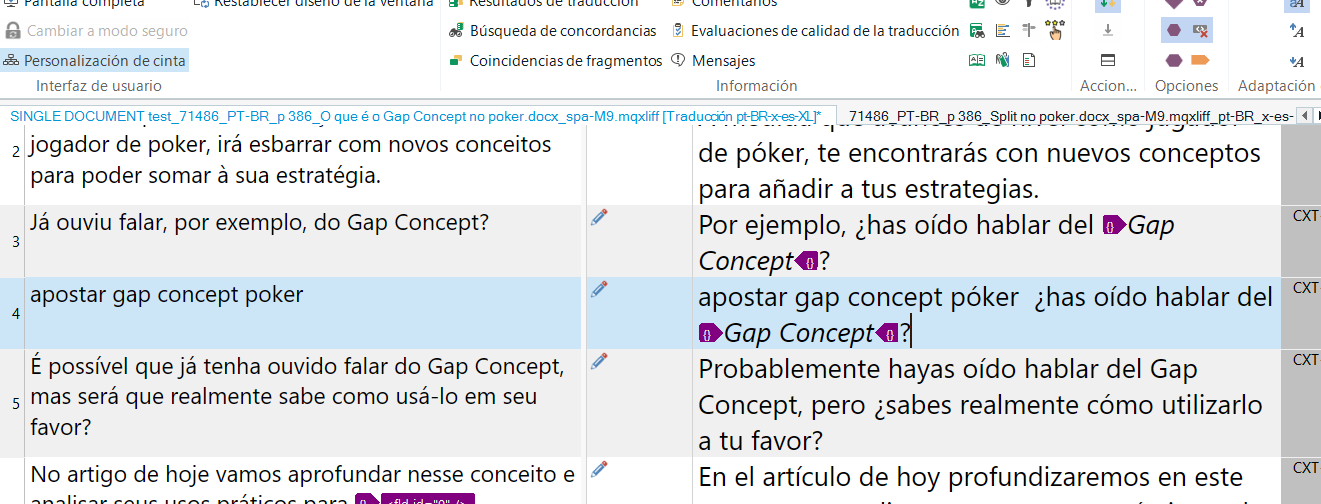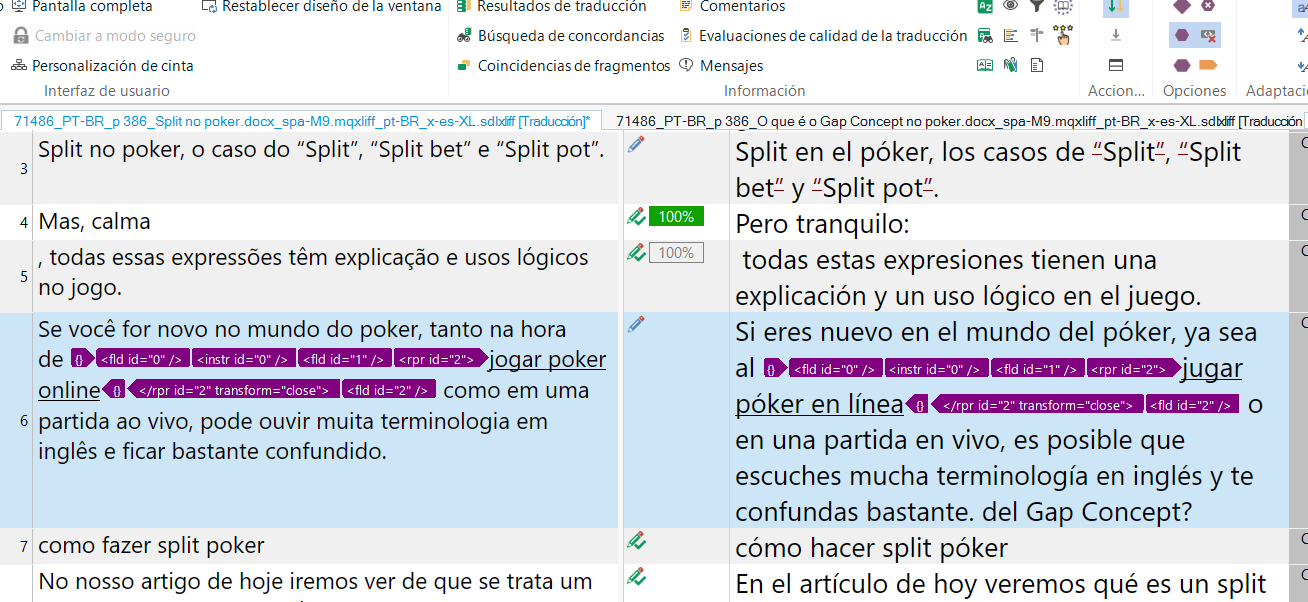hola, pregunto sin revisar si ya se ha planteado esta duda en el foro.
SDL 2022, el proyecto viene de memoq convertido a xliff y no está activa la cursiva ni la negrita.
Hay alguna forma de activar la cursiva?
I ask without checking if this question has already been raised in the forum.
SDL 2022, the project comes from memoq converted to xliff and neither italics nor bold is active.
Is there any way to activate italics?
as you can see italic and other functions appear grey, not highlighted
como se aprecia en la imagen, las funciones están en gris, no salen resaltadas

Generated Image Alt-Text
[edited by: RWS Community AI at 2:44 AM (GMT 1) on 30 Aug 2024]


 Translate
Translate







